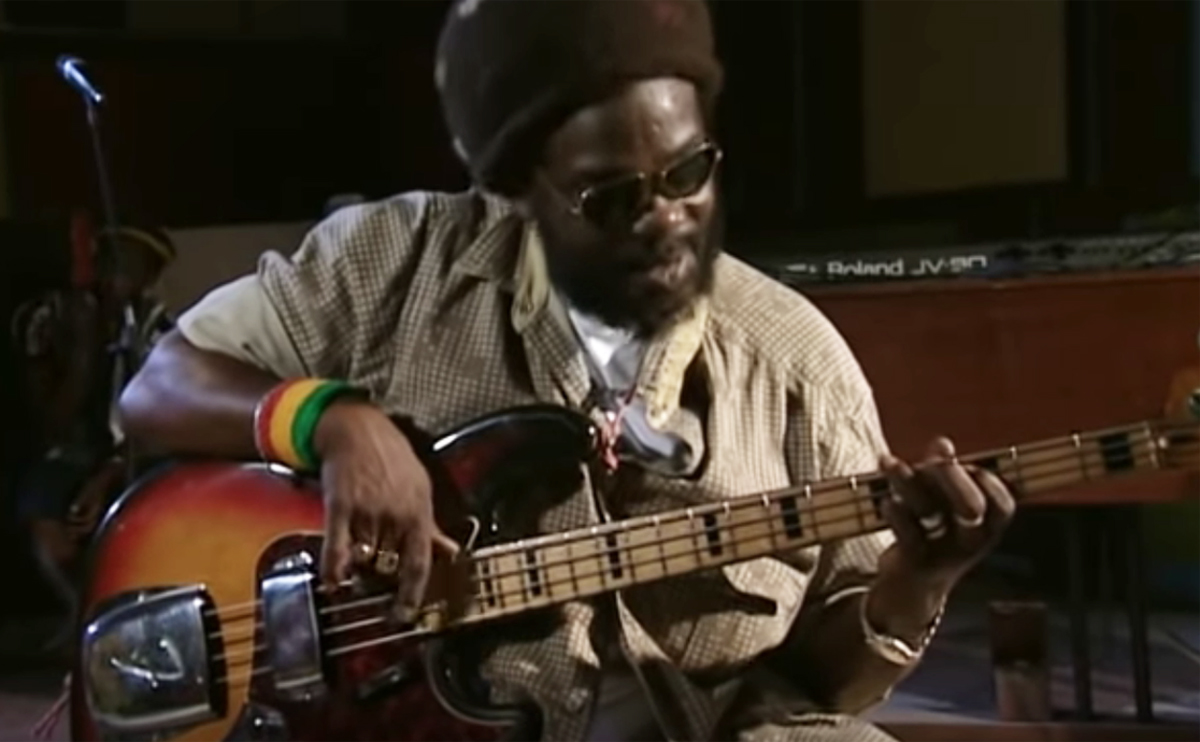‘Is This Love’ was the lead single taken from Bob Marley & The Wailers’ 1978 album Kaya, the group’s tenth studio release. As with the previous single, ‘Waiting in Vain’ (from 1977’s Exodus). ‘Is This Love’ showcased a softer side to Marley’s songwriting and the track proved to be a commercial success, peaking at number 9 in the UK charts.
Aston Barrett’s bassline on ‘Is This Love’ manages to weave subtle variations and melodic touches into an otherwise supportive, understated part. Although this is a song that I’d been playing for years on gigs, an in-depth listen to the bass part revealed a number of surprises:
- In bars 4-5, Aston doesn’t always stick to the unison figure with the guitar; notice how he stays on the root (and octave) at the beginning of bar 4 instead of doubling the guitar’s arpeggiated line.
- Bars 39-40 feature some ‘wrong’ notes; the harmony implies a D6 chord, the vocal contains a major 7th (C#), but Aston repeatedly outlines a D7 arpeggio. I kept telling myself that the C naturals were Bs, which would be more ‘correct’ in terms of theory, until I listened to the live version from Babylon By Bus, where you can hear the line more clearly.
- There’s an ear-grabbing, high-register fill in bar 44 that might need some practice if you’re to make it seamlessly back to the C# at the start of bar 45
Huge thanks to the sharp-eared Jim Battle for his corrections and suggestions with this transcription.
Bass Transcription: Bob Marley – ‘Is This Love’.pdf
‘Is This Love’ bass line performance notes
As with many of the newer transcriptions on the site, muted notes (indicated by an ‘x’ in the transcription) are notated according to the string that they are played on, rather than a specific pitch; this means that they are totally open to your own interpretation based on how (and where) you play the part on the bass.
One of the most important aspects of ‘Is This Love’ is the underlying eighth-note triplet subdivision; you’ll probably have encountered the term ‘swing eighths’ or ‘shuffle feel’ before, but you might never have been told what that actually means.
Regular eighth notes are counted ‘1 and 2 and 3 and 4 and’, with the ‘and’ notated as a + sign:

In a swing or shuffle situation, the subdivision that we’re dealing with is eighth-note triplets; I like to count these using ‘tri-puh-let’ to get three evenly-spaced notes within one beat:

To get a bar of swung eighths, we’re going to tie the first two notes of each triplet together:

Which can also be written as follows:

This is pretty horrible to read, so the convention is that we just notate parts using regular eighth notes and write ‘swing feel’, ‘shuffle eighths’ or something to that effect at the top of the chart; the reader is then expected to interpret the notes with the correct feel.
Whilst we’re talking triplets, you’ll notice that ‘Is This Love’ features frequent use of quarter-note triplets. This is another common rhythmic figure that many bass players just try to play by feel rather than learning how to count them.
A quarter-note triplet is three evenly-spaced quarter notes in the space of two beats, notated like this:

In order to find out where these notes are actually placed we need to revisit eighth-note triplets. Try tapping out triplets using your hands on a table or your lap as follows:

If we take our eighth-note triplets and accent every other note, we get the following:

Using a tie to join each accented note to the next eighth note then gives us the sound of quarter-note triplets. Try tapping your left hand in the air to really hear where the accents fall with the right hand:

Which sounds the same as this:

So, as a rule of thumb:
Quarter-note triplets = eighth-note triplets accenting every other note

